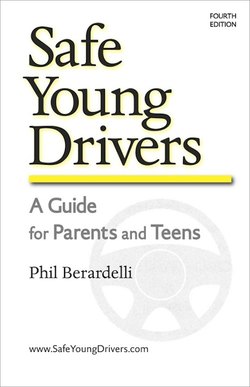Читать книгу Safe Young Drivers: A Guide for Parents and Teens - Phil Berardelli - Страница 11
A Few Words about Teaching
ОглавлениеAs you study the material in this book, and prepare to teach your teen, try to keep in mind that everyone learns best by doing. It’s an approach based firmly on principles of human psychology and physiology. The mind and body can adapt to many conditions and activities; it’s a survival mechanism. The key to successful adaptation is repeated exposure.
Driving, learned properly, is a process that becomes automatic, allowing the mind to relax without sacrificing attention, but the only way it can be learned properly is by repetition. This isn’t to say you shouldn’t spend time talking about what to do; it’s just that for some people there may be a temptation to overdo it.
One of the things I discovered during my brief years as a teacher was that certain methods can get in the way of the learning process. For example, many people have a tendency to teach by asking open-ended questions or posing “fill in the blank” situations:
“What should you never do if you’re approaching the crest of a hill?”
Or, “The most important thing to do after you start the engine is ______.”
Or, they simply spend too much time lecturing about proper technique while sitting still.
Try to avoid these methods, because they really aren’t effective. For one thing, they tend to create tension between you and your teen driver. People are naturally put on edge by someone lecturing to them. In your own experience, haven’t you felt uneasy being on the receiving end of such behavior?
Instead, briefly and in a very straightforward way, tell your teen exactly what you want him or her to know and explain the reason for it. Ask once in a while if he or she understands everything you’ve discussed so far; otherwise, keep things moving. Let the teen perform the lessons.
As you proceed, try to include as much real-time instruction as possible. Calmly and matter-of-factly comment on the performance as it happens. Also—and this is very important—act as your teen’s co-pilot. Keep your own attention well ahead—and behind—on the road. There will be many situations and hazards your youngster will not be able to anticipate until he or she is more experienced:
—developing congestion ahead, for example;
—vehicles that could emerge from blind entranceways or parking spaces;
—certain impatient drivers whom you know will be lane-weaving around you;
—and potholes, because most young drivers seem particularly oblivious to potholes. Teach your teen to avoid them or encounter them as slowly as possible.
There won’t be a shortage of road hazards, so you must serve double duty as instructor and co-pilot. You’ll find the co-pilot role very valuable; it’s the best way to impart knowledge, judgment and experience. By narrating road conditions and pointing out potential hazards, you’ll help your teen develop and strengthen his or her awareness.
If something isn’t being done correctly, say so, as soon as you notice it, but do it gently. Mistakes are part of the process, so there’s no need to become emotional. You have to expect them; be calm and review what happened immediately.
Speaking of which, as I mentioned earlier, it’s a good idea to spend a little time at the end of each session reviewing everything that was covered and anything unexpected that happened. Do it while everything remains fresh in both of your minds. Remember: Brief/Perform/Debrief. If your teen is experiencing a particular or persistent problem, note it in the lesson log for future reference.
Regarding the lessons, I designed them to increase the level of complexity gradually. Repeat each step enough so the teen driver recognizes the proper procedures and begins making his or her own corrections. It is important to stick with each step until the teen can perform all of its components well and consistently.
If not, it’s a risk to move on to a more complicated situation.
Remember to be just as quick to praise good performance as you are in pointing out mistakes. Be encouraging. It’s a way to build a young driver’s confidence and keep a strong bond between you.
If you are old enough to have a child of driving age, you have amassed your own body of experience on the road; try to make use of it whenever you can. If you disagree with one of my recommendations, replace it with your own. Or, present both sides and explain why you think your way is better.
I am certain the methods described in this book will provide a very solid basic level of skills for your teen, but they are by no means the only ways to do things. Everybody’s experience is different; you have valuable knowledge of your own. Use it. This process should not be about the book teaching your child. The book is a starting place. The process should be about you teaching your child.
